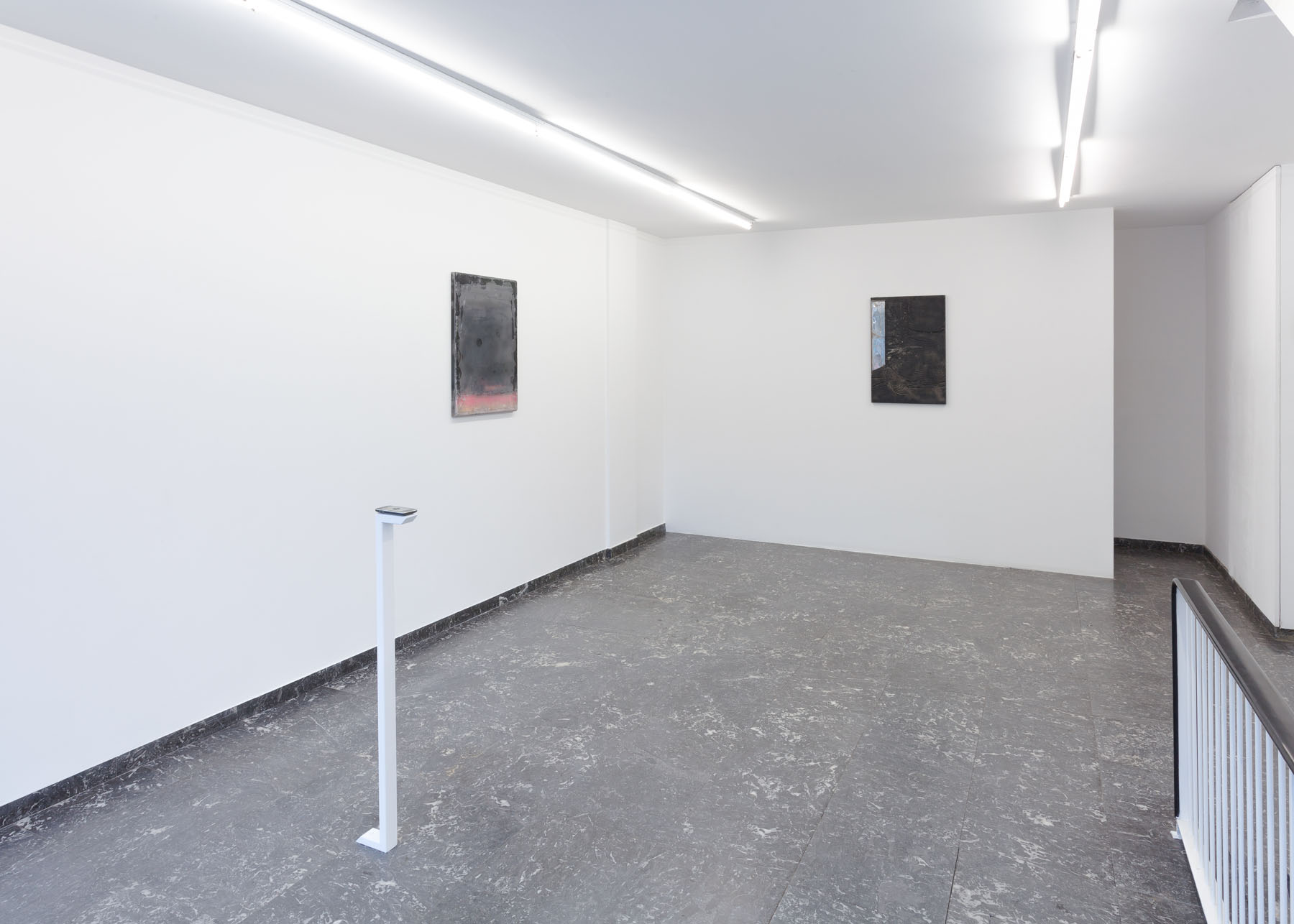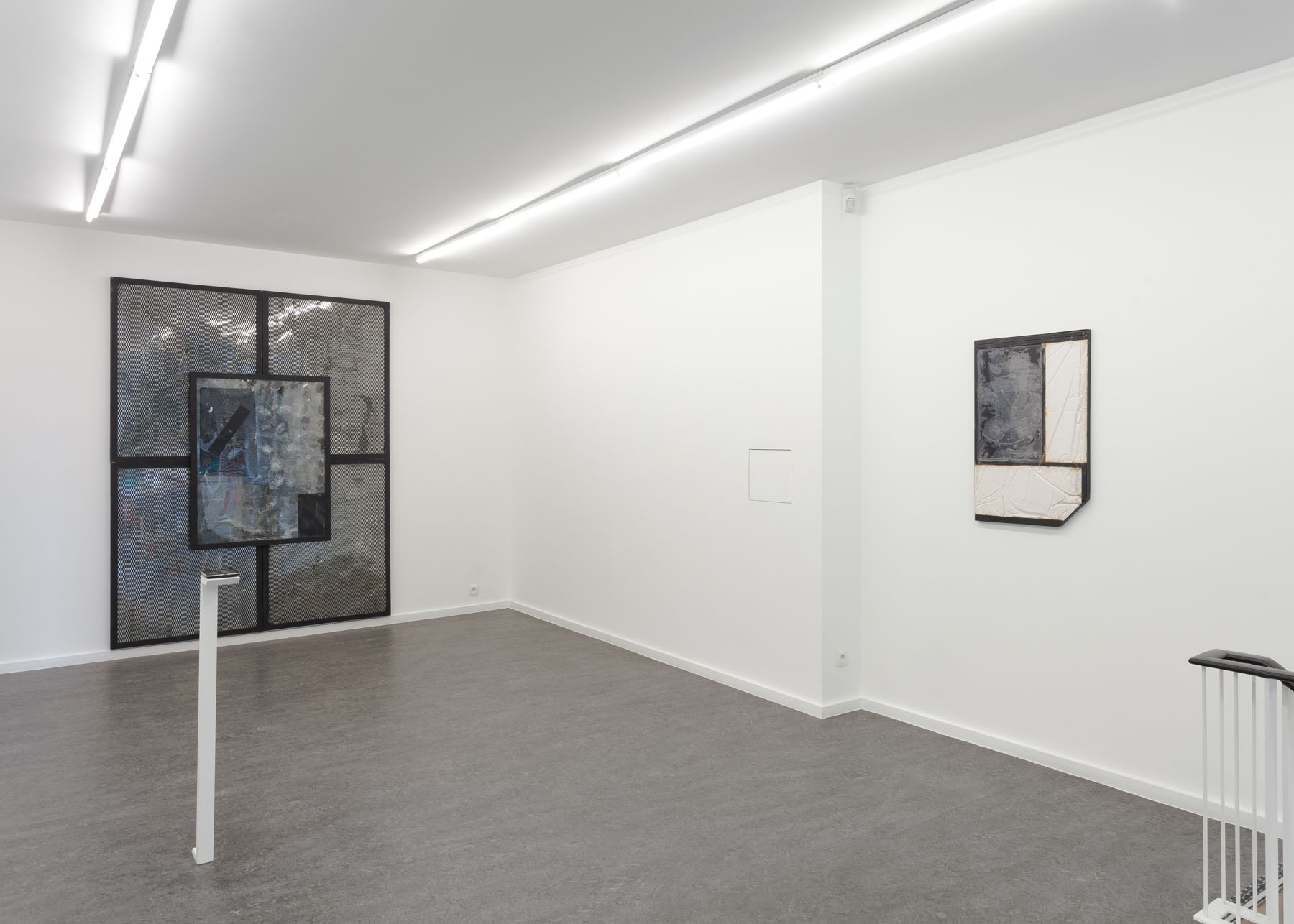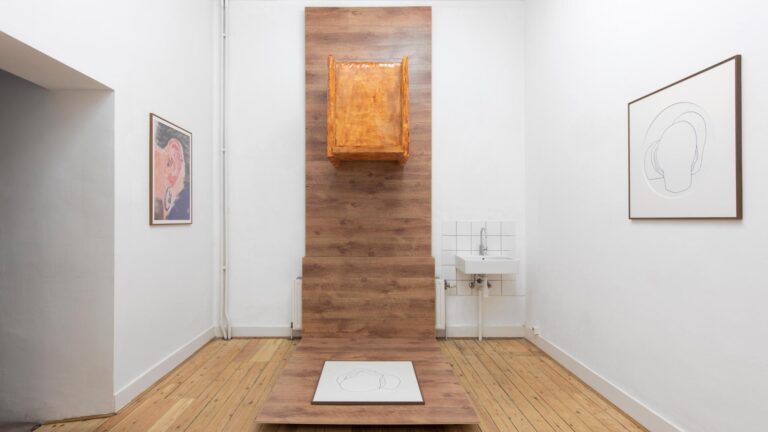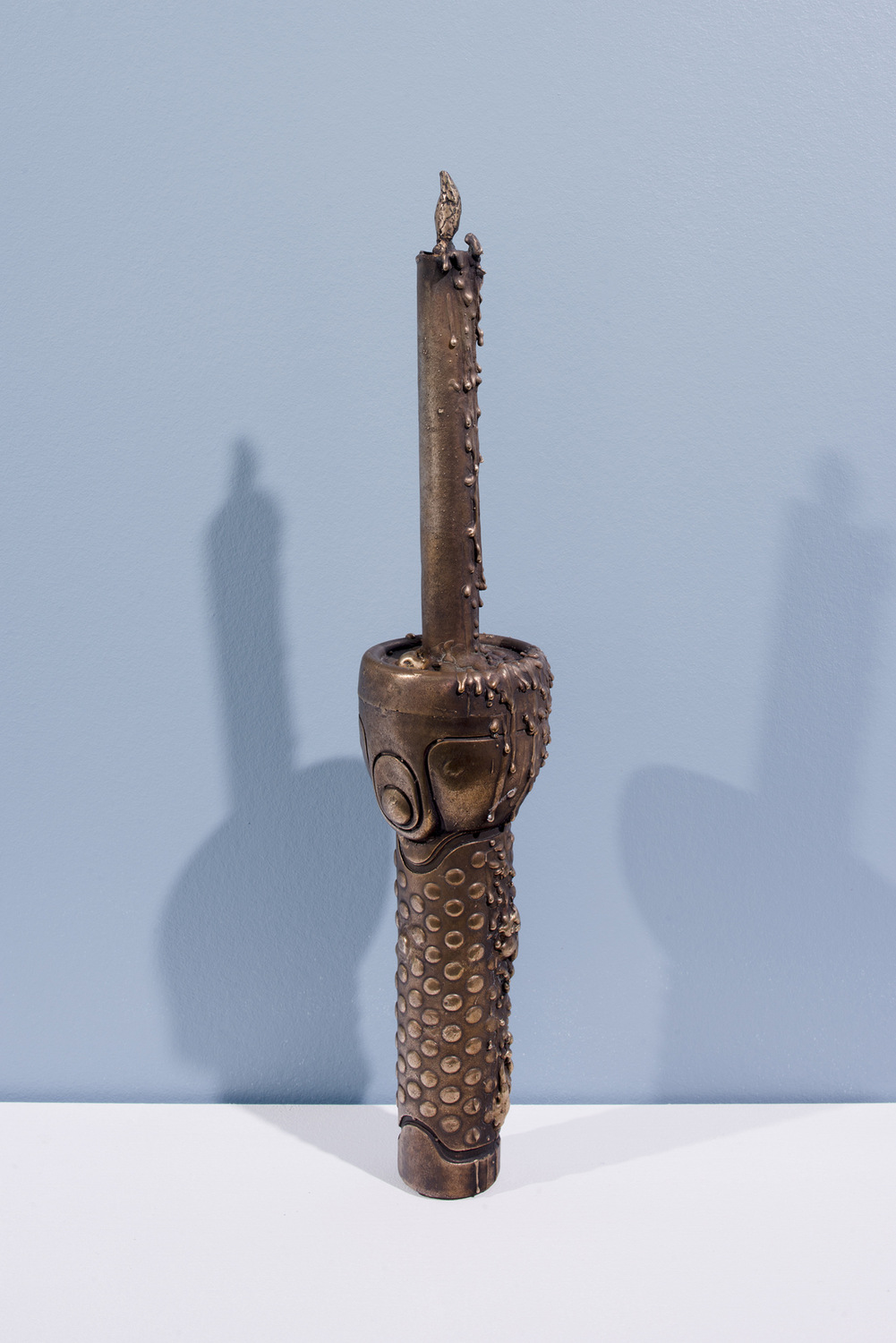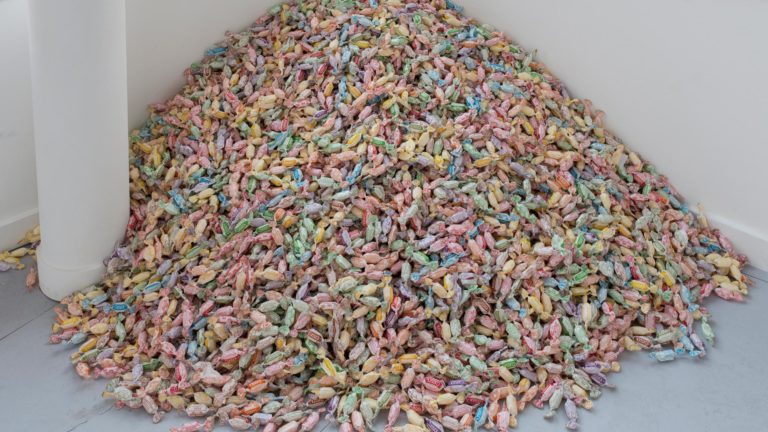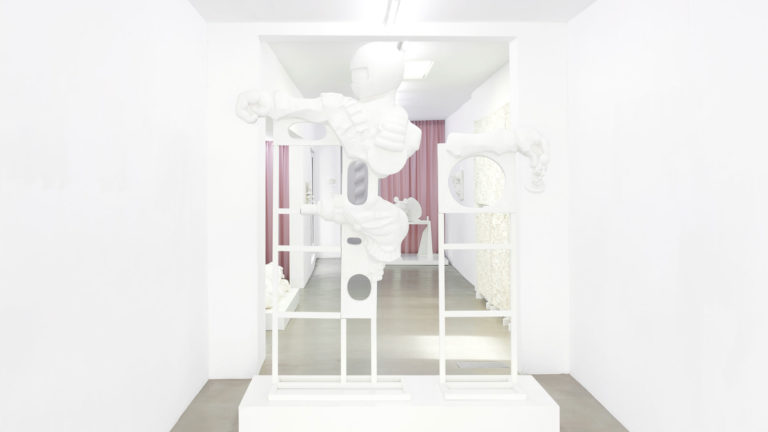Artist: Jason Gringler
Exhibition title: Screens
Venue: Tick Tack, Antwerp, Belgium
Date: July 4 – August 15, 2020
Photography: all images copyright and courtesy of the artists and Tick Tack, Antwerp
Screens are things: a simple observation that is usually ignored, transparent as they are, window-like image-carriers, contemporary vectors of information and communication. They are the things we don’t really tend to see since we see through them instead, those curious portals between two realms, the virtual and the physical. Having lost their once exclusive privilege, they seem to have infiltrated our daily lives as commodities in stealth mode. Screens are the intimate objects we go to sleep and wake up with, the smooth, affective surfaces we stare at all day. Fetishes, to be clear: polished, enchanted, magical objects that need very little of our imagination yet endlessly crave for our attention. They come in different sizes and formats, adapting themselves to our wrists and living rooms. Screens are no longer just televisions or computer monitors, they equally double as watches, calendars, phones, navigation and gaming devices. Both praised and cursed, the ubiquity of screens epitomizes our present-day condition.
The transparency of screens is just as much an illusion as the Renaissance idea of the painting as an ‘open window’, both are connected to an ocular regime. We are regularly confronted with the reflective, monolithic appearance of screens but only rarely do we get to see what is hidden inside, their material infrastructure of chips, wires and cables. As a paradigm, transparency also has a long-standing tradition in nineteenth- and twentieth-century architecture. One of the earliest examples is the Crystal Palace at the Great Exhibition in London’s Hyde Park (1851), an immense building composed entirely of glass panes and cast iron. The use of translucent materials articulated a revolutionary promise, a utopian modernist dream of revelation, visibility and accessibility. A similar ideology can be found in the architecture of Le Corbusier, Walter Gropius, Philip Johnson and, more recently, Zaha Hadid or Jean Nouvel. Not surprisingly, it also left an unmistakable mark on the corporate architecture of today. Just think of Apple Stores: transparent glass cubes that disclose virtually nothing of the company’s inner workings. This strangely correlates with the way in which the internal hardware of iPhones is almost hermetically concealed from public access. This interrelation of art, design and architecture is a clear evidence of the power of display(s).
All and much more of this comes to mind when looking at the work of Jason Gringler, especially when shown in Léon Stynen’s 1955 brutalist gem De Zonnewijzer. As a visual artist, Gringler approaches the aforementioned themes with an aesthetic that is firmly rooted in Post-Minimalism. The technological associations evoked by his works are in stark contrast with his choice of industrial materials: steel, plywood, glass and concrete. Many of his pieces contain a dynamic interplay between transparency and opacity, tackled from a sculptural point of view. They seem to deliberately withdraw from representation, as if they were probing its zero degree. What is left are abstract visual forms that are still vaguely recognizable, the artistic counterparts of the technological data controlling our daily lives. In his eBay sculpture-series, Gringler is using iPhones not as readymades but as raw material in order to perforate or break the screen, a kind of iconoclastic gesture.
For CINEMA TICK TACK, the artist assembled a collage of videos which were initially produced in New York. The videos will be projected on the glass facade after sunset, combining art, architecture and screen-based media into a single artistic statement.
Text by Pieter Vermeulen
Jason Gringler, Double Black Screen, 2020, double black screen, 81,5 x 114 cm
Jason Gringler, Screens, 2020, exhibition view, Tick Tack, Antwerp
Jason Gringler, eBay Sculpture (iPhone), 2019, iPhone, 6 x 11,5 cm
Jason Gringler, Steel/Mesh 1, 2015, steel/mesh, 183 x 244 cm
Jason Gringler, Screens, 2020, exhibition view, Tick Tack, Antwerp
Jason Gringler, Steel/glass/concrete 7, 2019, steel/glass/concrete, 52 x 77,5 cm
Jason Gringler, Steel/glass/concrete 18, 2020, steel/glass/concrete, 57 x 85 cm
Jason Gringler, Steel/mesh 2, 2016, steel/mesh, 183 x 244 cm
Jason Gringler, Screens, 2020, exhibition view, Tick Tack, Antwerp
Jason Gringler, Screens, 2020, exhibition view, Tick Tack, Antwerp
Jason Gringler, Screens, 2020, exhibition view, Tick Tack, Antwerp
Jason Gringler, Glass/plywood/gradient 2, 2020, glass/plywood/gradient, 57 x 77,5 cm
Jason Gringler, eBay Sculpture (extended iPhone), 2020, extended iPhone, 6 x 19,5 cm
Jason Gringler, eBay Sculpture (expanded iPhone), 2020, iPhone, 10,5 x 11,5 cm
Jason Gringler, eBay Sculpture (iPhone), 2019, iPhone, 6 x 11,5 cm
Jason Gringler, Steel/Mesh 1, 2015, steel/mesh, 183 x 244 cm
Jason Gringler, Steel/glass/concrete 10, 2019, steel/glass/concrete, 52 x 77,5 cm
Jason Gringler, Screens, 2020, exhibition view, Tick Tack, Antwerp
Jason Gringler, Screens, 2020, exhibition view, Tick Tack, Antwerp
Jason Gringler, eBay Sculpture (expanded iPhone), 2020, iPhone, 10,5 x 11,5 cm
Jason Gringler, Glass/plywood/gradient 1, 2020, glass/plywood/gradient, 57 x 77,5 cm
Jason Gringler, Steel/glass/concrete 12, 2019, steel/glass/concrete, 52 x 77,5 cm
Jason Gringler, Screens, 2020, exhibition view, Tick Tack, Antwerp



